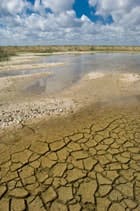Unless more sustainable water resource management practices are adopted by companies and individuals, almost half of the global economy and more than half of the world’s population will be exposed to severe water scarcity by 2050, according to research released this week by Veolia Water.
New research modeling various levels of economic growth and water management efficiencies underscores the need for change in how society manages water resources and water productivity. Analysis was conducted by Veolia Water and the International Food Policy Research Institute (IFPRI), an international agricultural research center studying sustainable solutions to ending hunger and poverty. The study assessed water stress, measured as water use in excess of 40% of available resources, at river basin and country levels, to identify countries and regions where water scarcity will put economic development and food production at risk.
Released in advance of World Water Day on March 22, key findings include:
• By 2050, current “business as usual” water management practices will put at risk approximately $63 trillion, or 45%, of the projected 2050 global gross domestic product (GDP) (at 2000 prices), equivalent to 1.5 times the size of today’s entire global economy. Moreover, 4.8 billion people (52% of the world population) will live in water-stressed areas by 2050; • If sustainable behaviors and practices are adopted, more than 1 billion people and approximately $17 trillion of GDP could escape exposure to risks and challenges from severe water scarcity. This $17 trillion figure reflects an amount larger than the entire GDP of the United States in 2010; and • Implementation of sustainable water management practices also would reduce the number of children projected to suffer from malnourishment by 21% compared to a business-as-usual approach.To assess the impact of water on economic growth, IFPRI and Veolia Water analyzed what economic growth levels can be sustained at today’s water management efficiency and to what extent gains in efficiency and water productivity can sustain higher levels of growth. Four scenarios were developed representing four different levels of water management efficiency. These four scenarios – BAU (Business as Usual), Low-Carbon, Grey and Blue – were assessed against three levels of economic growth to examine in each case the impact of growth on water scarcity and food security.
The proportion of water withdrawal with respect to total renewable water resources was used to determine levels of water stress and scarcity. Water stress puts at risk businesses, agriculture and people who need stable and reliable water supplies.
Analysis of the models yielded the following key insights:
• Analysis by IFPRI indicated that the Blue model, when compared to BAU under a medium-growth scenario, would help more than 1 billion people and $17 trillion of GDP avoid risk of unsustainable water supplies by 2050. The Blue model also would sustain high economic growth through 2050; • Absent any fundamental change in our management and behaviors, BAU practices would significantly impact investment decisions, increase investment needs and operational costs for agricultural and economic development, and affect the competitiveness of certain regions. Low-income countries will be especially impacted by water scarcity under a BAU approach; • Already, 39% of the world’s grain production is at risk of non-sustainable water use. That number would increase to 49% by 2050 if BAU practices continue; • A Low-Carbon model remains close to BAU levels because low-carbon energy production requires more water production due to greater levels of biomass consumption and hydropower development; and • A Grey Model – growth at all cost – does not enable high-growth levels to be sustained due to limits in water resource availability.The study is available as a white paper on the Veolia Water North America website at http://www.veoliawaterna.com/sustainable/a-sustainable-economy.
Source: Veolia Water


